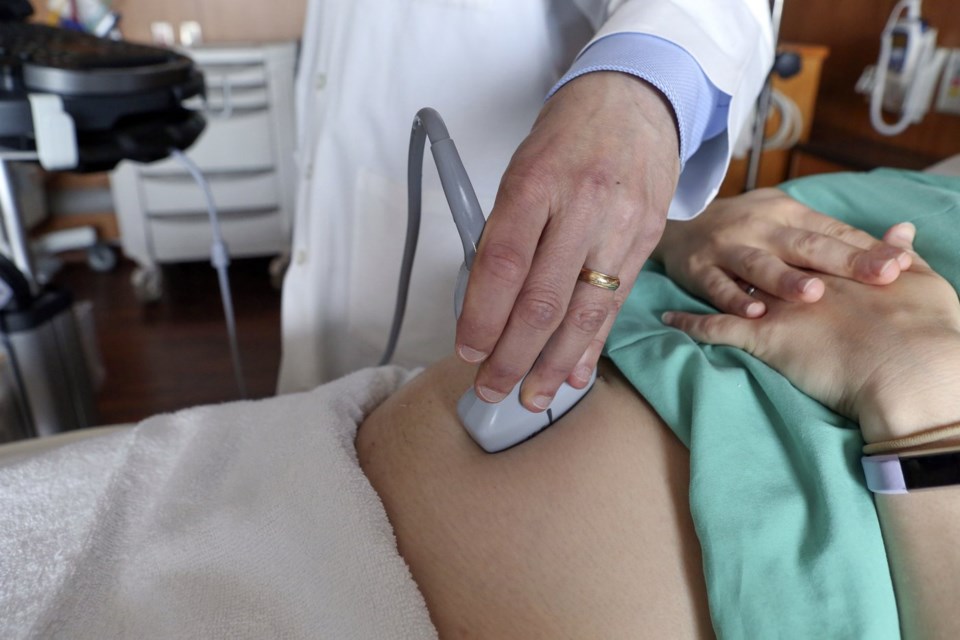Efforts to reduce the nation's rates involve state panels of experts that investigate and learn from each mother's .
The panels — called maternal mortality review committees — usually do their work quietly and out of the public eye. But that's not been the case recently in three states with strict abortion laws.
Georgia dismissed all members of its committee in November after information about deaths being reviewed leaked to the news organization . Days later, reported that Texas' committee won’t review cases from 2022 and 2023, the first two years after the state banned nearly all abortions. In Idaho, the state let its panel disband in 2023 only to reinstate it earlier this year.
“They’ve become more of a lightning rod than they were before,” said epidemiologist Michael Kramer, director of the Center for Rural Health and Health Disparities at Mercer University in Georgia.
Here’s what maternal mortality review committees across the nation do and what might happen next:
What are they?
“Maternal mortality review committees are important because they are the most comprehensive source of information about maternal mortality that we have,” said David Goodman, who leads the maternal mortality prevention team at the U.S. Centers for Disease Control and Prevention.
The panels review deaths that occur during pregnancy or within a year after it ends, whether directly related to the pregnancy or not. Causes of death can range from hemorrhage during childbirth to drug overdoses to traffic accidents.
The goal, Kramer said, is to examine maternal deaths and help "decide what we can do about them.”
All states, a few cities and Puerto Rico have these committees. Their membership varies and may include OB-GYNs, maternal-fetal medicine doctors, nurses, midwives, mental and public health experts and members of patient advocacy groups. Most have representatives from several areas of expertise, .
How members are selected also varies; people may apply, submit letters of interest or be invited to serve.
The selection shouldn’t be politically motivated, Kramer said, because “if there’s a systematic exclusion of certain data or certain perspectives” it’s difficult to truly understand what’s happening.
How do they look at deaths?
First, the panels work with state vital statistics offices and epidemiologists to identify deaths associated with pregnancy by examining death certificates and looking for a pregnancy checkbox or a related cause of death. They may also search for links to birth and fetal death records, or delve into hospital discharge data, media reports and obituaries.
Once they identify cases, they collect as much information as possible, such as prenatal care records, hospital and social service records, autopsy reports and interviews with family members. Professional “abstractors” distill all this into case narratives, which committee members pore over. Most use a standardized review process developed by the CDC — and all panels can get help and guidance from the agency.
They consider questions such as: Was the death pregnancy-related? What was the underlying cause? Was it preventable? What factors contributed?
States generally have privacy rules that protect committee members and people who provide information on the deaths.
The groups then issue public reports that don’t name moms or hospitals but include overall findings, trends and recommendations. Some come out a couple of years or more after the deaths.
Across the nation in 2023, Goodman said, 151 recommendations from those reports were implemented by communities, hospitals, medical professionals and policymakers.
What about Georgia, Texas and Idaho?
Georgia will rebuild its committee through a new application process, the state public health commissioner said.
Texas' committee has been reviewing 2021 deaths and will start on 2024 cases at its next meeting, Texas Department of State Health Services spokesperson Lara Anton said in an email to The Associated Press.
“Reviewing cases is a lengthy process and legislators have asked for more recent data. Starting the next review cycle with 2024 cases will allow us to provide that in the next report,” Anton said, adding that maternal and child health epidemiologists will continue to analyze and publish data for 2022 and 2023.
In Idaho, the reconstituted review committee now falls under the state board of medicine, which licenses doctors, instead of the state's health and welfare department. It will operate like it always has, said Bob McLaughlin, spokesperson for the medical board. Members met for the first time in November and plan to issue a report by Jan. 31. Because the legislature wanted the most up-to-date information, McLaughlin said the first report will cover only 2023 cases, and the group will review 2022 deaths next.
Goodman said he’s encouraged that every state has a review committee now — only 20 had them in 2015.
___
The Associated Press Health and Science Department receives support from the Howard Hughes Medical Institute’s Science and Educational Media Group. The AP is solely responsible for all content.
Laura Ungar, The Associated Press




